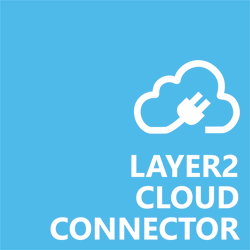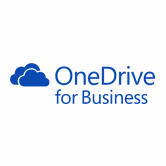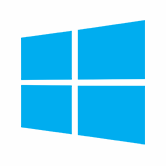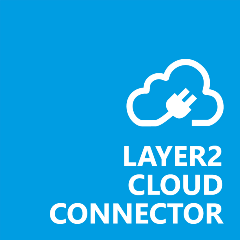HOW TO Connect ONEDRIVE WITH A Network-attached Storage (NAS) to use ONEDRIVE AS A FILE SERVER
This "how-to-connect" instruction will explain the configuration of a connection from OneDrive to a Network-attached storage (NAS). We will be synchronizing files and folders to OneDrive to enable you to use OneDrive as a file server.
You can find all details of how to configure Layer2 Cloud Connector in the Layer2 Cloud Connector User Documentation. If you want to start your free trial now, please click the button below.
Using OneDrive as file server - connect your OneDrive step-by-step
You will learn how to configure your OneDrive and the Layer2 Cloud Connector. We provide you with practical hints and explanations for a smooth start.
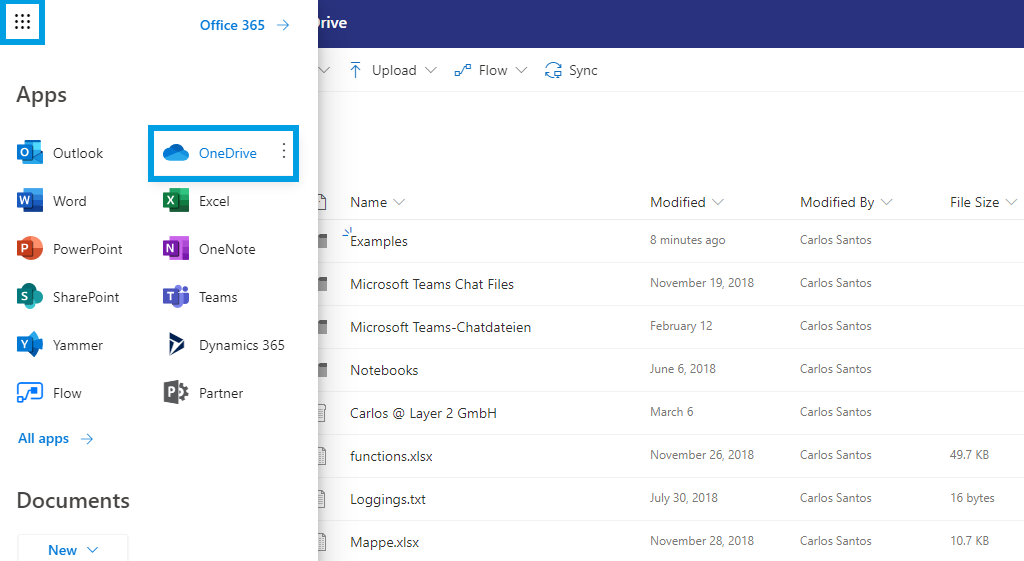
Step 1 - configure your OneDrive
Log in to SharePoint Online, navigate to the top left corner of the page and open the apps tab. Click the OneDrive icon.
First, click the gear icon on the top right corner to open the settings menu.
In the bottom left corner, look for the "Return to Classic OneDrive" option, as presented in the screenshot, and select it.
Next, navigate to the directory you want to connect to and copy the URL from your browser, which typically looks like this: https://company-my.sharepoint.com/personal/myAccount/Documents/Forms/All.aspx
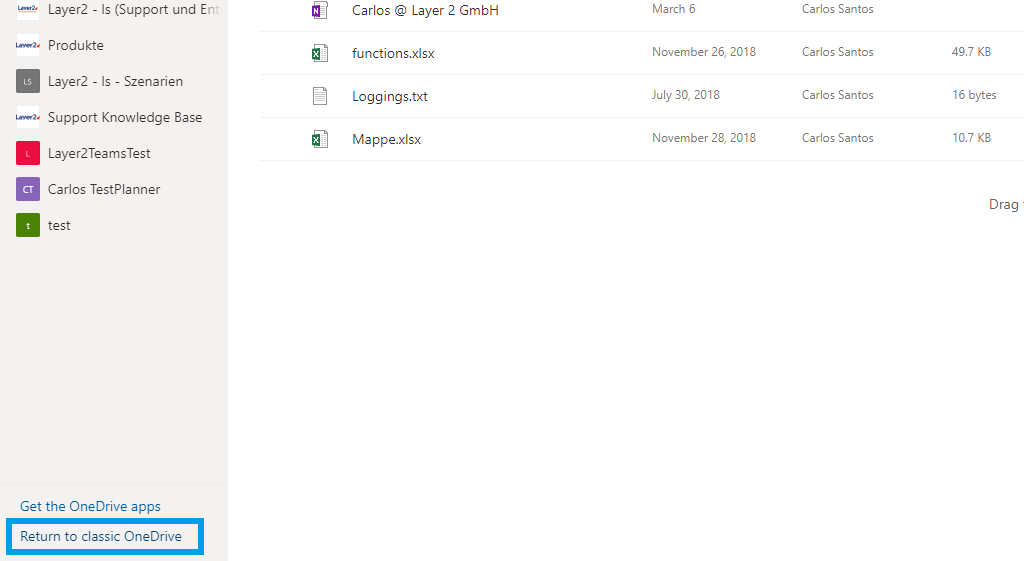
Step2 - configure Layer2 Cloud Connector - create a new connection
Create a new connection by using the Create New Connection option in the Actions pane (right-hand side). The new connection will appear at the bottom of the Connection Manager List (left-hand side). Click on your newly created connection to open the connection configuration settings.
Choose a meaningful name for your connection and replace the current "New Connection" Connection Title with it.
Connections to OneDrive can be bi-directional. An initial connection should always be uni-directional to assure that both data entities are identical before switching to bi-directional. Therefore, choose Left to Right as Direction. You can change this setting after your initial synchronization finished successfully.
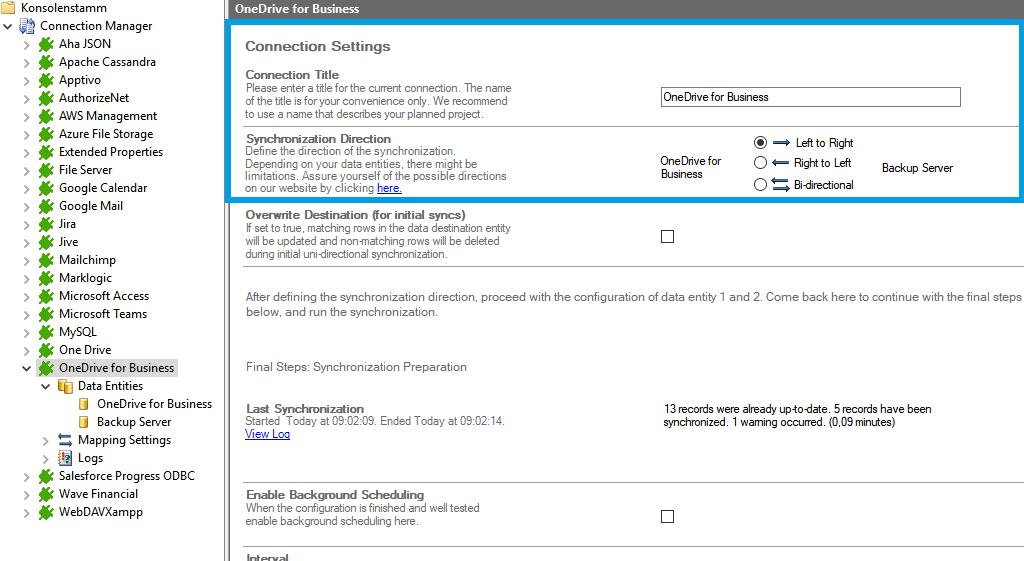
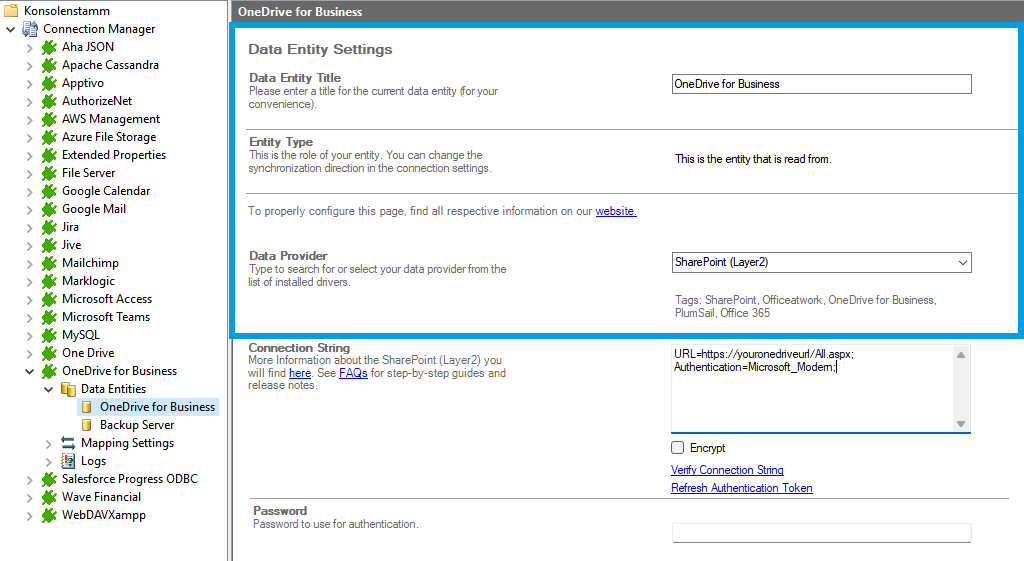
Step 3 - configure the Data Entity 1
We will now set up our Data Entities. Go to the data entity “Data Entity 1” to open the configuration settings.
Choose a Data Entity Title. It is recommended to give your entities meaningful names to maintain an overview when you decide to set up multiple connections.
Select the Data Provider for SharePoint from the data provider list. You can search for SharePoint by typing into the selection box.
For the Connection String, we need the in step 1 mentioned information. You can copy the connection string and adjust it to match your gathered information.
Use the Verify Connection String option to evaluate if the provided connection string is valid. Type your password in the designed field.
URL="https://urlfromstep1;Authentication=Microsoft_Modern;
- "URL=https://urlfromstep1;" this property defines the URL of your OneDrive folder you want to synchronize to.
- "Authentication=Microsoft_Modern;" this property will determine the authentication method used. Microsoft_Modern is the default authentication method to access Microsoft Office 365 instances and should work in most cases, even if the SharePoint site is connected to an ADFS. This authentication does not need any further connection-string settings, other than the URL of the connected system.
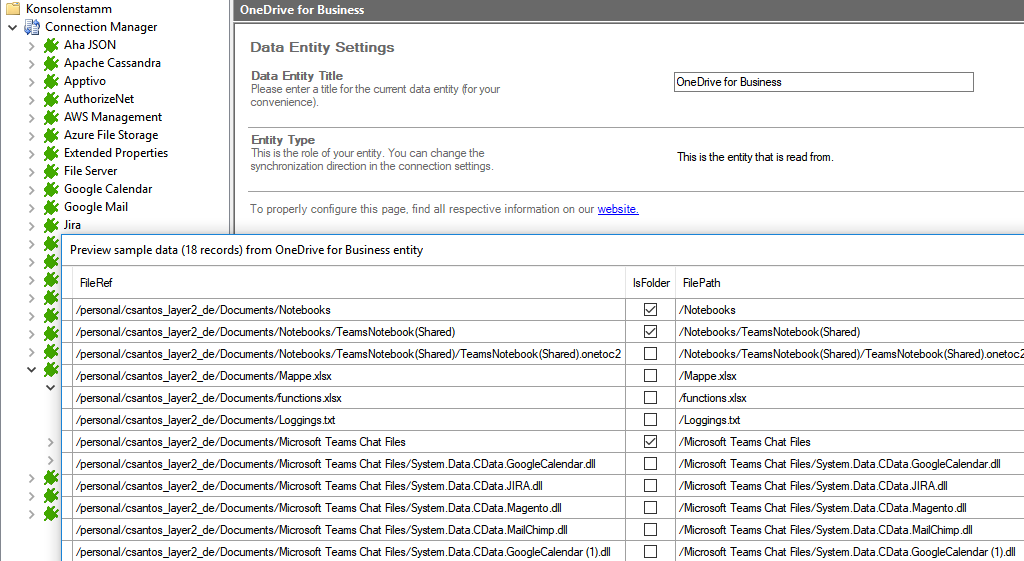
To check if all necessary columns are received, you can use the Preview Data option on the right-hand pane which will provide you with a pop-up window showing your sample data from your OneDrive entity.
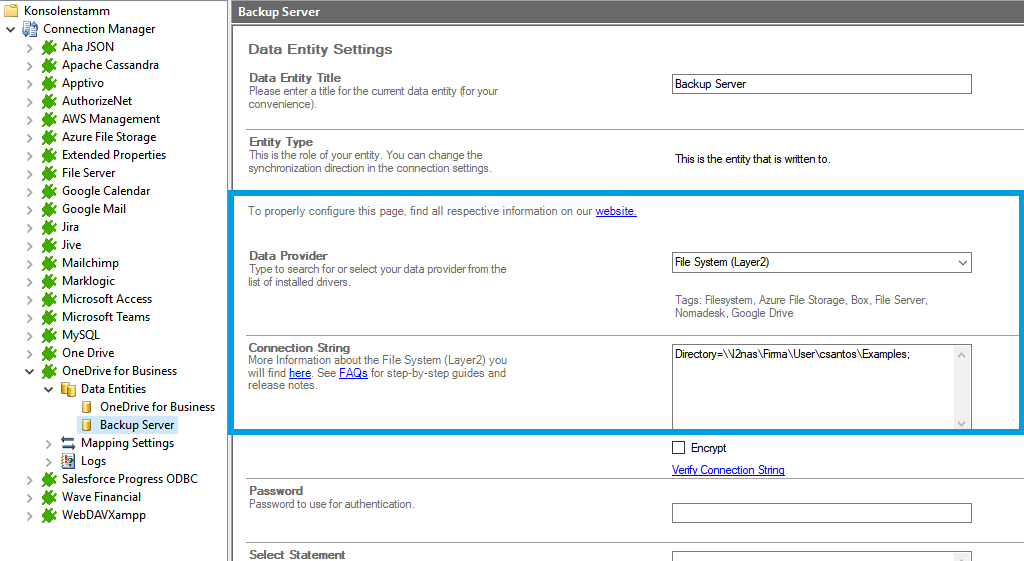
Step 4 - configure the Data Entity 2
We are going to send the data to a NAS-system. You need the address to a folder in the NAS-server you want to send the data to. You can get this information from your network administrator.
Use the left-hand pane to switch to the data entity "Data Entity 2". We will be using the File System Provider for this setup.
\\l2nas\Firma\User\csantos\Examples
Directory=\\l2nas\Firma\User\csantos\Examples;
- "Directory=path;" this property points to the folder in your file server you want to synchronize data to.
You can copy the connection string which contains the minimum of required properties to connect to your folder on the NAS-server.
Next, we will configure our mapping settings. Click on the Mappings option on the left-hand pane. If your fields from SharePoint are named identical to the fields from your source system, the Enable Auto Mapping option will match those columns. Disabling this option allows you to match your columns as needed. We enabled auto-mapping in our setup. Save your changes by using the right-hand pane option Save Changes.
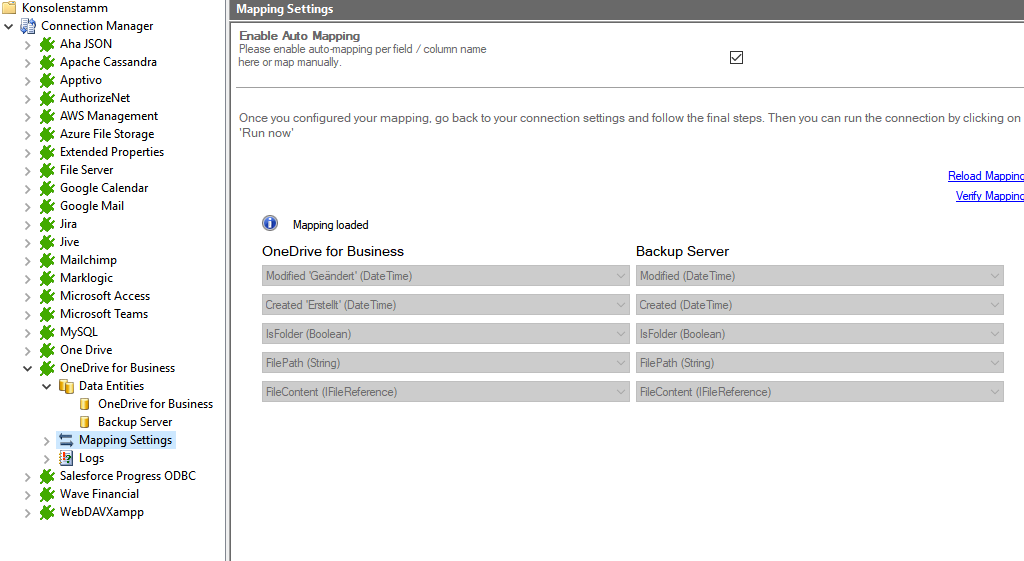
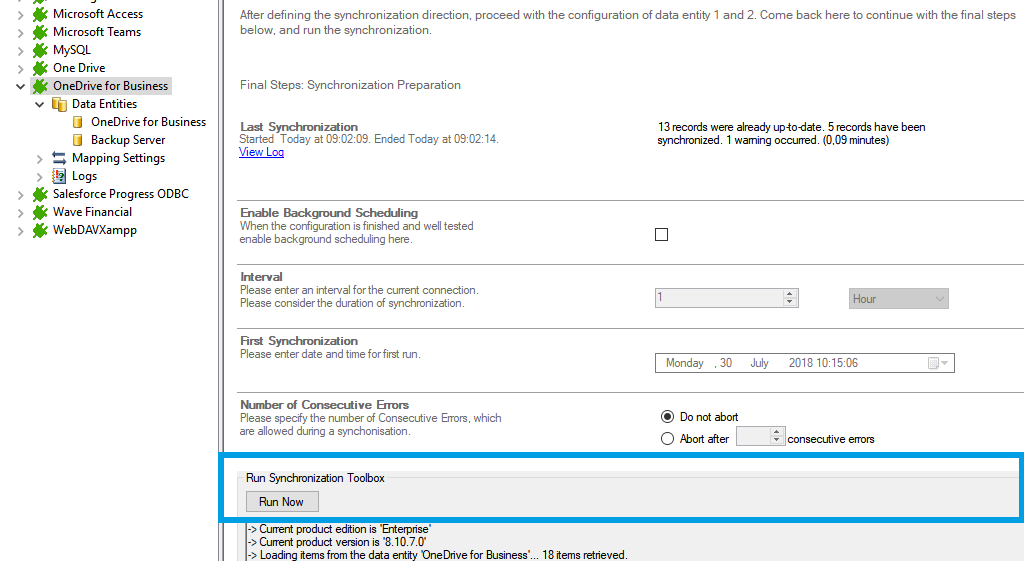
Step 5 - running your connection
To run your connection switch back to the main connection ans using OneDrive as a File Server configuration node and use the Run Now Button located on the bottom of the setup page. The Run Synchronization Toolbox will also display the synchronization process.
This is a data preview of the information we have accessed in our source entity.
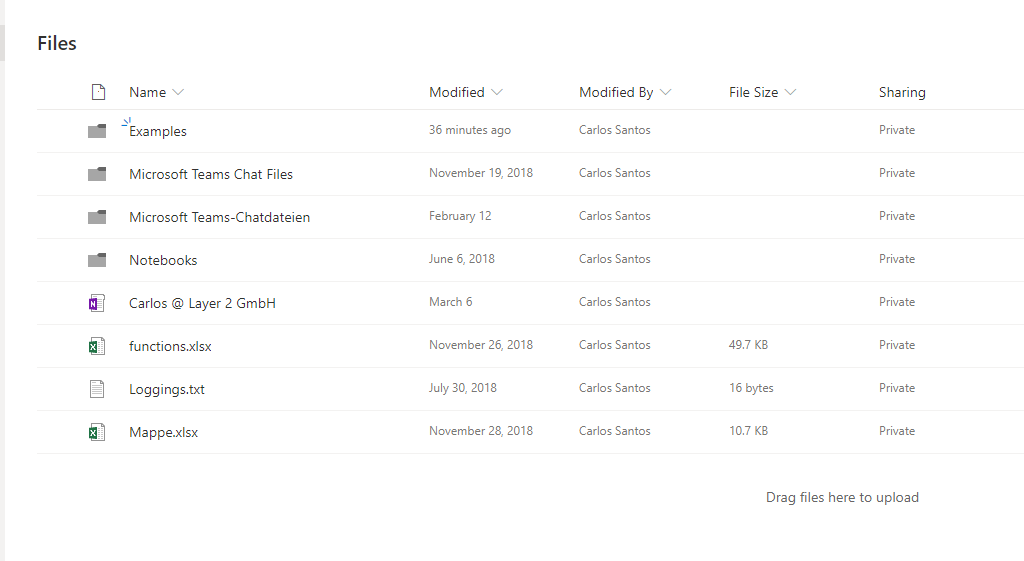
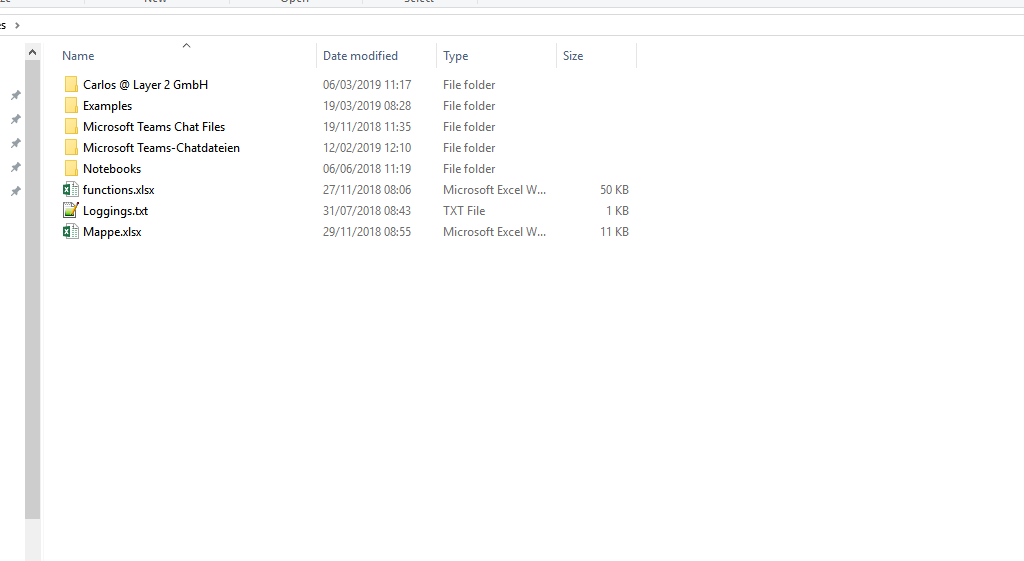
This will be the result in our NAS server after our initial successful synchronization.
If you want to use a bi-directional syncronization, you can now switch your connection directon after our first initial synchronization run finished successfully.
We also recommend to choose a Conflict Resolution that matches your enviroments needs. You can find out more about the different conflict resolutions in our Layer2 Cloud Connector User Documentation.
Hints and known issues about connecting OneDrive with a file server
Connection direction
As far as tested, this connection supports uni-directional as well as bi-directional synchronizations. After adjusting the direction to bi-directional, you should check your Mappings settings again because some systems might include read-only columns that cannot be mapped directly.
We also recommend to choose a conflict resolution that matches your environments needs. You can find out more about the different conflict resolutions in our Layer2 Cloud Connector User Documentation.
Other libraries or lists
If you want to use another library in your OneDrive, you can get the correct URL by navigating to the location, opening the List/Library Settings and looking at the "Web Address:" given at the top of the settings page. That is the URL you will need for the connection string to this location.
If you are having trouble finding other content in your OneDrive location, you can click on the Cog-like icon near your account name in the upper-right corner and select Site settings from the list of options. Then under "Site Administration", select Site libraries and lists, which will show all items currently in the OneDrive as well as allow you to create new ones. The site content may also be listed in the left column of that page, if your UI configuration allows it.
SharePoint list attachments
SharePoint list attachments are not managed at this time and are not supported.
File size
OneDrive fo Business supports files up to 2GB. Larger files will be rejected (see SharePoint Online software boundaries and Limits for more information.)
Final note
While this guide is current and functional at the time of its creation, future updates may slightly alter the steps. If you encounter any changes, feel free to reach out to our support team for assistance.
OneDrive data integration and synchronization made easy
With Layer2 Cloud Connector you can save time and money because it connects OneDrive with cloud or on-premises systems in minutes. If you haven't already tried Layer2 Cloud Connector, it's time to take the first step towards effortless connectivity. Start your Layer2 Cloud Connector trial and experience how easy it can be to connect OneDrive to a file server (NAS).
Advantages of using OneDrive
- You can share documents with teams and individual team members for collaboration - with unlimited file access, anytime.
- OneDrive offers the flexibility of accessing your files from anywhere with an internet connection. Whether you're in the office, at home, or on the go, your files are readily available.
- Your OneDrive is a storage that securely store files and information.
- You can integrate OneDrive with other Microsoft products (including Office 365). Tight integration with Microsoft 365 applications, such as Word, Excel, and PowerPoint, ensures a smooth experience when creating, editing, and sharing files directly from OneDrive.
- You can seamlessly integrate OneDrive with file server using Layer2 Cloud Connector. In your file explorer, you can work with copies of your data stored in OneDrive - even if you are offline.
- In OneDrive, multiple users can work on the same file, track edits, and interact live as you work on the file together, facilitating seamless teamwork and reducing versioning conflicts.
- File restore helps you to keep data stored on the cloud up to 30 days after you delete it in OneDrive user interface. You can restore all files deleted in OneDrive after a specific date and view modification history.
- Compared to a on-premises file server, OneDrive makes it simpler for you to recover or secure your files and folders with less assistance from your IT team.
Frequently asked questions about using OneDrive as a file server
Can you use OneDrive like a file server?
You can not use OneDrive exactly like a file server but you can connect both systems. OneDrive is primarily designed as a cloud storage and file-sharing service rather than a traditional file server. However, it can serve as a powerful cloud-based alternative to traditional file servers, offering several advantages such as anytime access, real-time collaboration, and robust security features. Users can store, share, and collaborate on files seamlessly within the OneDrive environment. It allows users to store files and access them from various devices through the internet.
While it offers some collaborative features, it may not provide the same level of centralized file management and advanced permissions control typically associated with dedicated file servers in enterprise environments.
Can I use OneDrive as file server replacement?
You can not use OneDrive as file server replacement. For enterprises with file management needs, user permissions, and intricate folder structures, a dedicated file server is still preferred because of its advanced control, safety and customization options. However OneDrive can be a useful complement in terms of providing access from everywhere and collaboration.
What is the difference between OneDrive and a file server?
The difference between OneDrive and a file server is in their architecture and features. OneDrive is a cloud-based service designed for personal and small to medium-sized business file storage. It's storing files in the cloud and offering remote access and collaboration. In contrast, a file server is an on-premises server providing shared access within a local network.
OneDrive enables anywhere access, real-time collaboration, and scalable storage with Microsoft managing security and updates but offers limited centralized control compared to traditional file servers. File servers, typically on-premises, provide enterprise-level control, scalability, and advanced customization for large organizations with complex file management needs. They are usually limited to local network access, require on-premises management, and may lack advanced collaboration features.
The choice between them depends on an organization's needs and preferences.
What is the difference between OneDrive and OneDrive for Business?
The difference between OneDrive and OneDrive for Business is their different audience. Both are cloud storage services offered by Microsoft. OneDrive is designed for personal use and is associated with individual Microsoft accounts. It's suitable for storing personal files and offers limited free storage, with the option to purchase more through Microsoft 365 subscriptions.
On the other hand, OneDrive for Business is tailored for organizations and is part of the Microsoft 365 suite. It provides businesses with a secure platform for collaborative file storage, sharing, and document management among employees. OneDrive for Business comes with Microsoft 365 business plans, offering more extensive features and storage options compared to personal OneDrive accounts.
What functions does OneDrive for Business offer?
OneDrive for Business offers a versatile set of functions tailored for business needs. It serves as a secure cloud-based storage solution, allowing organizations to store, organize, and access files from anywhere. Real-time collaboration features enhance teamwork, enabling simultaneous editing, commenting, and version tracking on shared documents.
The platform prioritizes security with encryption, multi-factor authentication, and compliance measures. OneDrive for Business seamlessly integrates with Microsoft 365 applications, offering a cohesive ecosystem for document creation, communication, and collaboration. Overall, it empowers businesses with flexible and secure file management, fostering efficient teamwork in a cloud-based environment.

